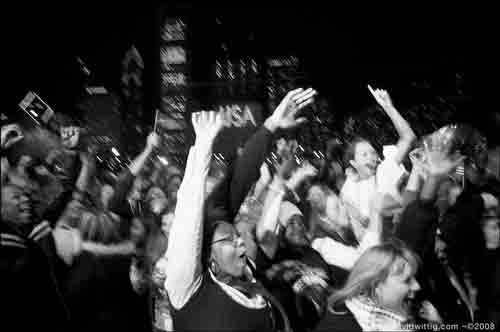
Yesterday was St. Patrick’s Day. Except, here in Geneva, it did not feel like St. Patrick’s Day. There were some token efforts in the Irish pubs. But no parades down Fifth Avenue. No Macnas gambolling in the streets of Galway. Nothing apart from a staid reception at the Irish Mission and a perfunctory broadcast on Swiss local radio.
My thoughts ran to Seamus Heaney. Inevitably the lines about hope and history rhyming surfaced. Those lines became the standard Heaney quote whenever one spoke of the Irish peace process. I remember quoting the lines fervently myself in 2007 when speaking to some senior students in Colegio Cardinal Newman in Bueneos Aires. It was just after the historic agreements between Ian Paisley, Bertie Ahern and Tony Blair. And the Irish rugby team wasn’t doing too badly either that year!
But then, once in a lifetime
The longed-for tidal wave
Of justice can rise up,
and hope and history rhyme.
This morning, out of curiosity, I Googled the phrase “hope and history rhyme” in preparation for a talk today. I wondered about the background to the lines of the poem in which they occur. I immediately happened upon the blog site of Jim McGuiggan. His blog entry is a wonderful weaving together of the background to the poem, its contemporary relevance and a theological perspective. It is so good that I cite it in full here with Jim’s generous permission:
Seamus Heaney adapted a play of Sophocles (‘Philoctetes’). The central character is Philoctetes, a Greek hero who possessed a charmed bow and arrows given to him by Hercules. On the island of Lemnos he was bitten by a serpent and his foot began to rot. The intolerable pain made him scream all the time and the stench from the foot became unbearable to those around him so they deserted him. He endured ten years of loneliness, pain and the anguish of betrayal. Days became weeks, weeks became months and months became years and hope of rescue faded as his bitterness grew. But an oracle told the Greeks they couldn’t take Troy without the bow of Philoctetes so they went back to ask him if he would go with them. His years of disappointed hope were over and when he emptied himself of the bitterness that had built up inside him the cripple marched off with them to glory.
Heaney puts these words in the mouths of the chorus at the end of the play: “History forbids us to hope this side of the grave. But once in a lifetime, the longed-for tide of justice can arise and hope and history rhyme.” With Northern Ireland as its setting, with its long history of feuds and killings, dashed hopes, treachery and unfulfilled promises, Heaney’s call is well contextualised. Don’t cease to hope for one day hope and history will rhyme and crippled truths will walk!
Much of history is hum-drum. Some of it is meaningless! Much of it forbids us to hope this side of the grave. Some biblical history shares these features. Not every event recorded in the Bible is filled with theological significance but here and there, an event or a cluster of events seizes our attention and God has reached from behind the curtain of his hiddenness and in these events we catch a glimpse of him. And once we’ve seen him we can’t “unsee” him.
The Exodus shoves the curtain aside and generations live in the strength of that vision. The Incarnation catches us by the breath and the Cross drives us to joyful amazement. Paul, on whom the shadow of the cross fell, was driven, careering off across half a world to proclaim triumph and hope in the name of the God who was hung on a public gallows. And when friendly hands would try to slow Paul down, telling him to take it easy, he would shrug them off and say: “I can’t be different, the love of Christ compels me and the world needs hope.” (2 Corinthians 5:14) And it doesn’t matter that we moderns hang him again and again, thinking we’ve got rid of him; he’s been there and done that! Christ can’t be harmed by rejection. In fact there’s every reason to believe that he is never as powerful as he is when he’s weak so to crucify him over again is in some ways to turn him loose on society in a more mighty way. Even to see him crucified (when we trouble the church, which is his body) is to put ourselves in danger of being drawn to him because he said when he was “lifted up from the earth” he would draw all men unto him. That cross…that strange cross in which ugly history and hope rhyme.